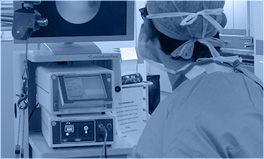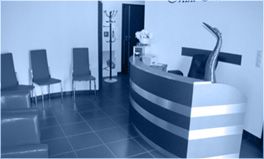Minimal endoscopic surgery for treatment the cubital tunnel syndrome
A-0250 Minimal endoscopic surgery for treatment the cubital tunnel syndrome
Dawid MROZIK1,2, Agnieszka JACKIEWICZ1,2
1 HANDProject Clinic, Gdańsk, Poland
2 SWISSMED Private Hospital, Gdańsk, Poland
Background: Compression of the ulnar nerve in the cubital tunnel is the second most frequent entarpment neuropathy of the upper extremity after carpal tunnel syndrome. None of the described techniques for ulnar nerve decompression, however, have proved to be superior in randomized prospective trials. The ideal operative treatment for cubital tunnel syndrome remains controversial. We therefore presented our series of endoscopically decompression of the ulnar nerve at the elbow to determine the effectiveness of this procedure.
METHODS: It was prospective, nonrandomized clinical study. In 25 patients: 15 men and 10 women (age’s range 29–76 years) with clinical McGowan grade I (3 patients), II (16 patients), and III (6 patients), and electrophysiologic signs of cubital tunnel syndrome, 21-cm of the ulnar nerve was released through a 2-cm-long skin incision. Diagnosis was based on history, clinical examination (i.e. pain over medial epicondyle, sensory loss, positive Tinel’s sign, weakness or atrophy of the muscles innervated by the ulnar nerve, and positive elbow flexion test), and confirmed by neurophysiological studies (nerve conduction velocity and electromyography). A 4-mm, 30° standard endoscope and Storz retractor were used during the procedure, and the mean postoperative follow-up examination was 12 months.
Results: There were no visible nerves and vessels injured during the procedure. The main postoperative complication was hematoma in two patients which resolved after conservative management. There was no elbow extension deficit after surgery and surgical wounds, all healed within a week. At final follow-up evaluation, according to the Bishop Rating system, excellent outcomes were obtained in 20 (80%) patients and good outcomes in 3 (12%) patients. Grip strength showed a highly significant increase after surgery compared to the nonoperated hand (p<0.005). The mean DASH score was decreased significantly about 72% (from 76.4 before operation to 21.3 after procedure) (p<0.005); 88% patients were satisfied with the procedure.
Conclusions: Endoscopic technique for treating cubital tunnel syndrome is a safe and reliable procedure, characterized by a short incision, minimal soft tissue manipulation, less scar sensitivity, and early postoperative mobilization. It demonstrates promising benefits against conventional approaches (complete release and good visualization) and reduced complication profile (painful scarring and elbow contracture). Endoscopy is a widely imaging study for assessing nerves providing useful information on the severity and stage of nerves pathology.
The Journal of Hand Surgery (Eur) 42(Supplement 1) / S52









